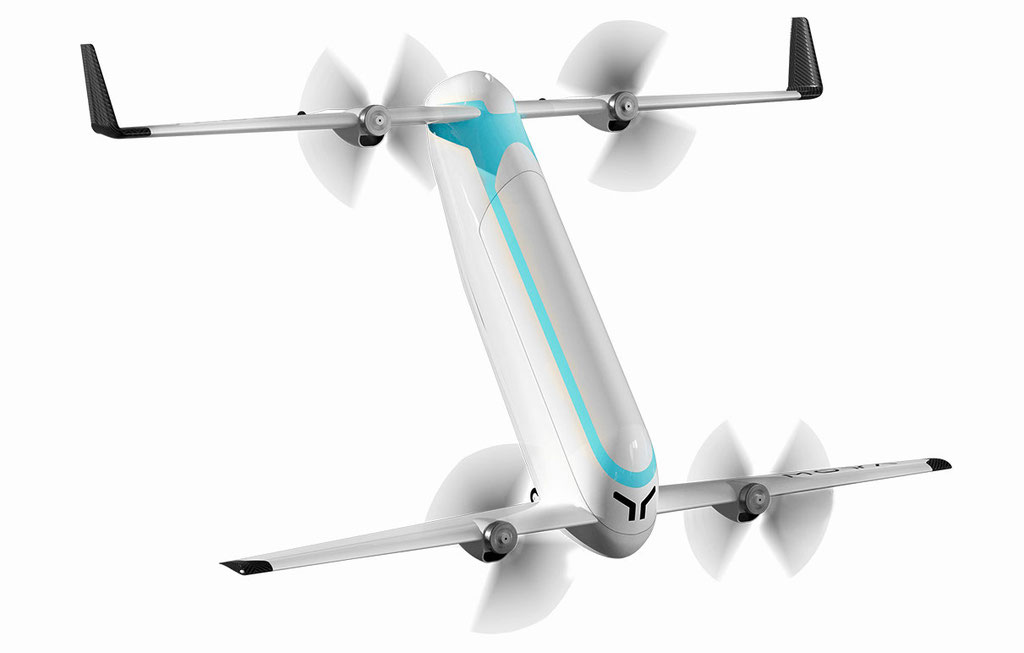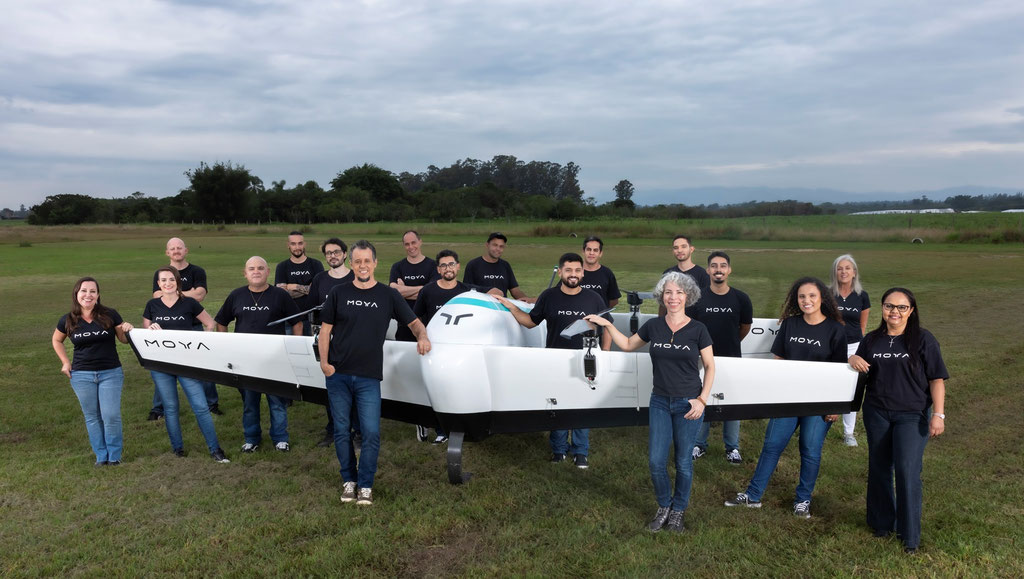GoAERO Stage 1 Winner
 Nearly 70 years ago, at the dawn of the space age and the creation of NASA in 1958, President Dwight D. Eisenhower proclaimed that “many aspects of space and space technology…can be helpful to all people…”
Nearly 70 years ago, at the dawn of the space age and the creation of NASA in 1958, President Dwight D. Eisenhower proclaimed that “many aspects of space and space technology…can be helpful to all people…”
Marcelo Araujo, a 44-year-old aerospace engineer from a suburb of São Paulo, Brazil, agrees. But he maintains that there was a major reason that Eisenhower’s vision was not able to be fully realized for years to come: technology.
“Yes, NASA tried this in the 1950s, but the technology didn’t exist to bring it to fruition,” relates Marcelo. “Yes, NASA tried this in the 1950s, but the technology didn’t exist to bring it to fruition. Now, we have the technology to do this thing.”
“This thing,” is the development of a new class of flying vehicles; aircraft that can more effectively and efficiently respond to wildfires, hurricanes and other extreme weather disasters, as well as to medical emergencies in which ambulances face accessibility and timeliness challenges.
Marcelo knows well of what he speaks. Indeed, he and his colleagues at Moya Aero, the accomplished aerospace logistics company based in Sao Jose dos Campos, where he is head of business development, are already doing exactly that -- as members of Team MOYA AERO in GoAERO, the global challenge to build the world’s first-ever autonomy-enabled emergency response flyer. Marcelo is the team captain.
And they are doing it well: The team is one of 11 GoAERO Stage 1 winners from around the world in which hundreds of competing teams submitted detailed designs of their flyers. In Stage 2, teams will be judged on their prototypes. Then, teams will participate in the Final Fly-Off, competing in adversity, maneuverability, and productivity missions, with some $2M USD in prizes on the line. Flyers must be capable of delivering a First Responder, evacuating victims in need, providing emergency medical supplies, and aiding in humanitarian efforts.

“We were surprised by being named a Stage 1 winner,” says Marcelo, whose passion for “flying” dates back to his teenage years when he completed his first sky diving adventure: he’s now done more than 1,100. “At the same time, it stimulates us and motivates us to be even better moving forward.”
Team MOYA AERO is moving forward with its Moya Cargo vehicle, a "sky-breaking" electric vertical take-off and landing (eVTOL) aircraft designed to revolutionize special missions and advanced air mobility, according to Alexandre Zaramela, CEO of Moya Aero who put together the GoAERO team and designed the flyer, with “the support of the best and most innovative professionals in the aerospace market from Brazil.”
Alexandre, who has been interested in “everything fast and mobile since childhood,” explains that the team’s remotely piloted aircraft “seamlessly integrates vertical take-off and landing capabilities with smooth transitions to horizontal flight, allowing it to achieve greater range than competitors worldwide.”
The Moya Cargo is engineered for versatility, Marcelo adds, noting that it will excel in multiple flight operations, including sustained hover, vertical and horizontal flight modes, and effortless transitions between them.
Marcelo and Alexandre learned about GoAERO directly from Gwen Lighter, the founder and CEO. “We met at the U.S. Consulate Conference in Brazil. She introduced us to the initiative, and after her presentation, we were inspired to participate,” Marcelo recalls.
That inspiration stems from the work that Alexandre and other team members have been doing at various companies at which they were employed, including Airbus and Embraer, and companies that he founded in Brazil over the past 25 years.
Those latter companies, including Moya Aero and ACS Aviation, have been manufacturing drones, eVTOLs, and autonomous vehicles for the agriculture logistics industry and others. And 10 years ago, his company built the first electric airplane in the Southern Hemisphere. Moreover, “we have already been developing a platform for emergency rescue and for firefighting, so GoAERO is a natural next step for us,” he relates.
Brazil’s unique geography and climate present distinct emergency response challenges that have shaped Team MOYA AERO’s approach. From flooding in densely populated coastal cities to wildfires in the Amazon rainforest, these diverse environments have become an ideal testing ground for their aircraft. The Moya Cargo incorporates features specifically designed to overcome limitations that conventional emergency vehicles face in Brazilian terrain, while offering solutions applicable to crisis scenarios worldwide.

Helicopters can perform many emergency missions but are limited by such factors as extreme weather conditions, time of day, and difficult terrains. “So, we can make response safer, without needing a pilot, and in a much more efficient manner,” Alexandre says, adding that one component of the Moya Cargo that is especially noteworthy is its ability to use infrared for mapping fires to maximize response to the hottest spots. The team is now also incorporating artificial intelligence (AI) software into the flyer.
The vast experience and diverse skillset of the team, whose members also include Paulo Farah, Thiago Barbeta, Rafael de Sá, Nathalia Araujo, Dzu Campelo, Regina Cyrino and Luca Almeida, should be a difference-maker in GoAERO, Marcelo says, adding that the GoAERO expert webinars have been very helpful.
Also helpful are the lessons team members have learned from legendary aviators and aerospace engineers from the past, including Otto Lillienthal, Joseph Kovacs, Paolo Iscold, Orville and Wilbur Wright, and Alberto Santos-Dumont, who designed and flew the first powered airplane in 1906.
The team hopes to make a little history of its own. Says Marcelo: “The Moya Cargo will be capable of supporting the most complex special missions an aircraft can perform, including mountain rescues and operations in areas with restricted access, firefighting, aerial imagery, and cargo transport.”
To highlight your GoAERO Team, contact us at info@goaeroprize.com.
REMINDER: Stage 2 Registration Documents are available here.
Benefits for Teams can be found here.
Team Summit: Register here.
